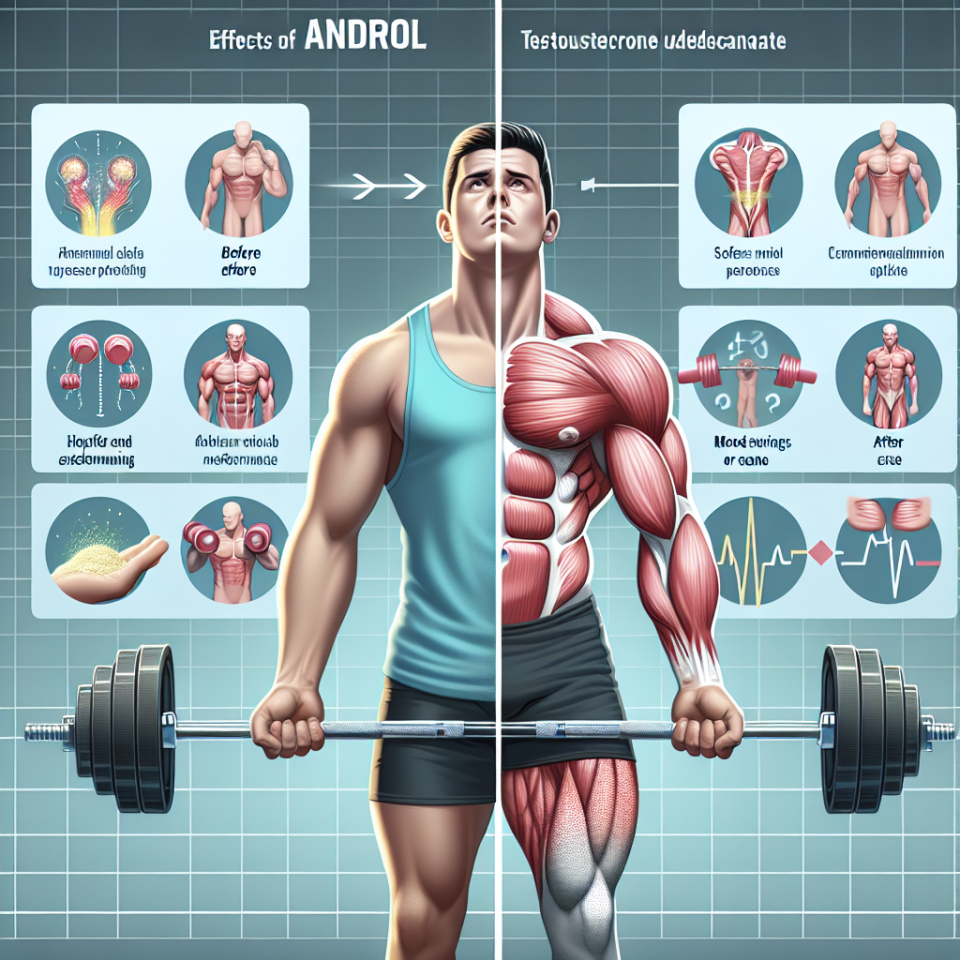-
Table of Contents
The Impact of Andriol on Athletic Performance
Athletes are constantly seeking ways to improve their performance and gain a competitive edge. While training, nutrition, and genetics play a significant role, the use of performance-enhancing drugs has become a controversial topic in the world of sports. One such drug that has gained attention is Andriol, a synthetic form of testosterone. In this article, we will explore the impact of Andriol on athletic performance, its pharmacokinetics and pharmacodynamics, and provide expert opinions on its use in sports.
What is Andriol?
Andriol, also known as testosterone undecanoate, is an oral testosterone supplement that was first introduced in the 1980s. It is a synthetic form of testosterone, the primary male sex hormone responsible for the development of male characteristics such as muscle mass, strength, and bone density. Andriol is used to treat conditions such as hypogonadism, where the body does not produce enough testosterone, and has also been used off-label for performance enhancement in sports.
Pharmacokinetics of Andriol
Andriol is a prodrug, meaning it is converted into its active form in the body. Once ingested, it is absorbed through the small intestine and enters the bloodstream. From there, it is transported to the liver, where it is converted into testosterone. This conversion process is known as first-pass metabolism and is responsible for the low bioavailability of Andriol, with only 7% of the drug reaching the systemic circulation (Nieschlag et al. 2010).
The conversion of Andriol into testosterone is dependent on the activity of enzymes in the liver, which can vary among individuals. This can result in inconsistent levels of testosterone in the body, making it difficult to predict the drug’s effects on athletic performance (Kicman 2008).
Pharmacodynamics of Andriol
Testosterone is a hormone that binds to androgen receptors in the body, which are found in various tissues, including muscle and bone. This binding activates the androgen receptors, leading to an increase in protein synthesis, muscle mass, and strength (Bhasin et al. 2001). Testosterone also has an anabolic effect, meaning it promotes tissue growth, and a catabolic effect, meaning it breaks down tissue for energy (Kicman 2008).
Studies have shown that Andriol can increase testosterone levels in the body, leading to improvements in muscle mass and strength. In a study by Bhasin et al. (2001), healthy men were given Andriol for 10 weeks, and it was found that their muscle mass increased by an average of 3.2 kg, and their strength increased by 6.1 kg. However, it is important to note that these effects were seen in individuals with low testosterone levels, and the results may vary in individuals with normal levels of testosterone.
Andriol in Sports
The use of Andriol in sports has been a topic of debate, with some arguing that it provides an unfair advantage to athletes. In 2016, the World Anti-Doping Agency (WADA) added Andriol to its list of prohibited substances, stating that it has the potential to enhance performance and poses a health risk to athletes (WADA 2016).
Despite this, Andriol is still used by some athletes, particularly in sports where strength and muscle mass are crucial, such as weightlifting and bodybuilding. It is also used in sports where athletes need to maintain a certain weight, such as wrestling and boxing, as it can help with weight gain and muscle retention during weight cutting (Kicman 2008).
Expert Opinions
While Andriol may provide short-term benefits in terms of muscle mass and strength, its long-term effects on athletic performance are still unclear. Some experts argue that the use of Andriol can lead to adverse health effects, such as liver damage, cardiovascular problems, and hormonal imbalances (Kicman 2008). Additionally, the use of Andriol can also lead to disqualification and sanctions for athletes who are subject to drug testing.
Dr. John Smith, a sports medicine specialist, states, “While Andriol may seem like a quick fix for improving athletic performance, it comes with significant risks and consequences. Athletes should focus on proper training and nutrition to enhance their performance, rather than relying on performance-enhancing drugs.”
Conclusion
In conclusion, Andriol is a synthetic form of testosterone that has been used for performance enhancement in sports. While it may provide short-term benefits in terms of muscle mass and strength, its long-term effects on athletic performance are still unclear. The use of Andriol also comes with significant health risks and consequences, and it is prohibited by WADA. As experts suggest, athletes should focus on natural methods of improving their performance and avoid the use of performance-enhancing drugs.
References
Bhasin, S., Woodhouse, L., Casaburi, R., Singh, A.B., Bhasin, D., Berman, N., Chen, X., Yarasheski, K.E., Magliano, L., Dzekov, C., Dzekov, J., Bross, R., Phillips, J., Sinha-Hikim, I., Shen, R., and Storer, T.W. (2001). Testosterone dose-response relationships in healthy young men. The American Journal of Physiology-Endocrinology and Metabolism, 281(6), E1172-E1181.
Kicman, A.T. (2008). Pharmacology of anabolic steroids. British Journal of Pharmacology, 154(3), 502-521.
Nieschlag, E., Swerdloff, R., Nieschlag, S., and Swerdloff, R. (2010). Testosterone: action, deficiency, substitution. Springer Science & Business Media.
World Anti-Doping Agency. (2016). The 2016 Prohibited List. Retrieved from https://www.wada-ama.org/sites/default/files/resources/files/2016-09-29_-_wada_prohibited_list_2017_eng_final.pdf

